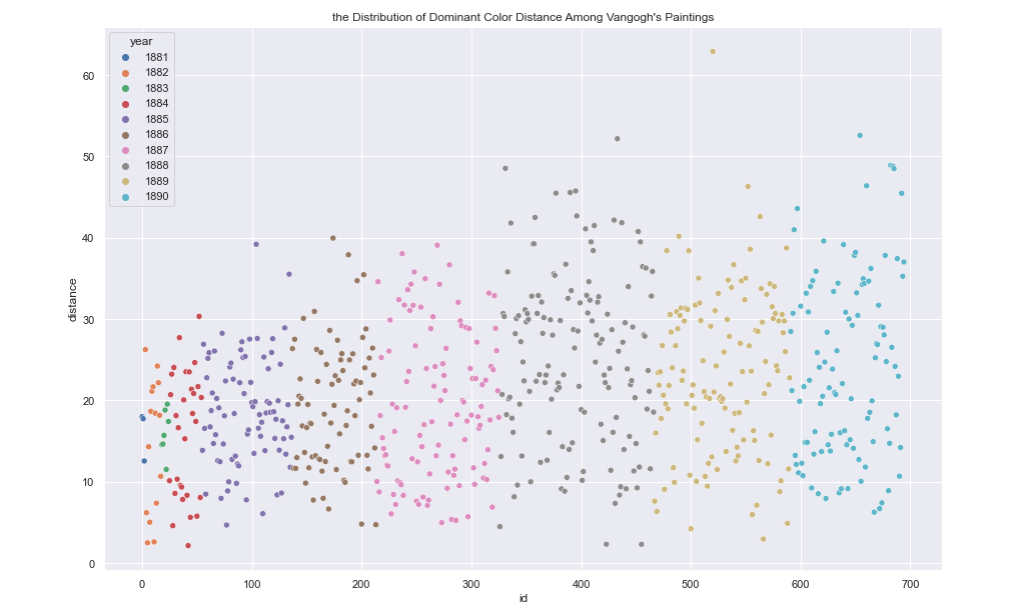Amina Matt, Yinghui Jiang

Clément Dauvilliers, Titaÿna Kauffmann

The project aims to explore the evolution of cultural practices within the music industry through the analysis of music charts from the US, UK, and France. By employing Dynamic Topic Modeling (DTM), it investigates the topics present in these charts and their changes over time, offering insights into the broader cultural context. Using natural language processing, the project extracts and analyzes the lyrics of charted songs, seeking to discern patterns in topics and to compare cultural trends across the three countries.
Didier Dupertuis, Yuxiao Li, Irina Serenko
 The project combines computer vision and art history to analyze a dataset of over 103,250 paintings, focusing specifically on portraits from the 16th to 18th centuries that depict children with dogs. Using object detection algorithms, it identifies relevant paintings within a subset of portraits and self-portraits. The subsequent qualitative analysis delves into why dogs and children were frequently depicted together, exploring the potential symbolic meanings and additional insights these representations might provide about the depicted children. Merging computational techniques with art historical inquiry, the project traces the evolving roles of dogs in historical portraits, highlighting their significance in conveying social status, innocence, and the nuanced portrayal of children in art across different periods.
The project combines computer vision and art history to analyze a dataset of over 103,250 paintings, focusing specifically on portraits from the 16th to 18th centuries that depict children with dogs. Using object detection algorithms, it identifies relevant paintings within a subset of portraits and self-portraits. The subsequent qualitative analysis delves into why dogs and children were frequently depicted together, exploring the potential symbolic meanings and additional insights these representations might provide about the depicted children. Merging computational techniques with art historical inquiry, the project traces the evolving roles of dogs in historical portraits, highlighting their significance in conveying social status, innocence, and the nuanced portrayal of children in art across different periods.
Hannah Casey, Florian Vincent, Yuhan Bi

The project explores the artistic evolution and influences of Feitian Apsaras in the Mogao Caves of Dunhuang, China, from the 5th to the 10th century. It examines how Greek iconography, particularly the depiction of the goddess Nike as a messenger, influenced these celestial figures. Through manual annotation of key points on images of Apsaras and clustering techniques, the study identifies common postures like the Knielauf and raised arms, aiming to quantify the visual similarities between Feitian Apsaras and their Greek counterparts. The findings reveal enduring elements and transformations in the depiction of Apsaras, suggesting a blend of cultural influences over the centuries.
Marin Piguet, Yichen Wang, Yurui Zhu
 The project examines the iconic fifth Solvay Conference on Physics, held in 1927. Utilizing a data-driven approach and prosopography, it analyzes the 29 attending physicists to explore their similarities, differences, and connections. Through multiple correspondence analysis (MCA) and social network analysis (SNA), the study reveals the dynamics within this group, revealing the conference’s impact on the scientific community. The project also assesses the conference’s impact by comparing publication patterns and topics before and after the event. The analysis shows that while the fifth Solvay Conference is often mythologized, its true legacy lies in the consolidation of scientific relationships and research trajectories.
The project examines the iconic fifth Solvay Conference on Physics, held in 1927. Utilizing a data-driven approach and prosopography, it analyzes the 29 attending physicists to explore their similarities, differences, and connections. Through multiple correspondence analysis (MCA) and social network analysis (SNA), the study reveals the dynamics within this group, revealing the conference’s impact on the scientific community. The project also assesses the conference’s impact by comparing publication patterns and topics before and after the event. The analysis shows that while the fifth Solvay Conference is often mythologized, its true legacy lies in the consolidation of scientific relationships and research trajectories.
Hannah Stephanie Bi, Yuanhui Lin, Siyi Wang

This study explores the evolution of Vincent van Gogh’s use of color, highlighting a significant shift towards unconventional, varied, and lighter hues in his later works. This transformation is primarily attributed to the influence of Paul Gauguin, especially during their collaboration in Arles. By computationally analyzing van Gogh’s paintings and letters, the research reveals a growing diversity in his color choices, as well as a direct correlation between the colors he wrote about and those he used in his art. This connection underscores how van Gogh’s relationship with Gauguin catalyzed a deeper, more expressive use of color.